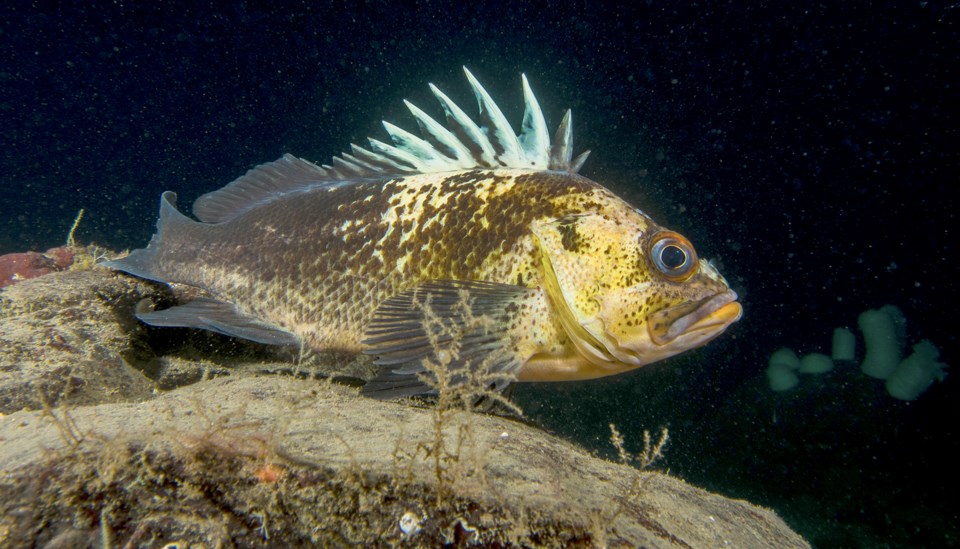With 13 sharp spines, each with venomous anti-predator glands at their base, Sebastes maliger, or the Quillback Rockfish is well fairly well-protected from other creatures that might eat it - except us. Even though Rockfish are an endangered species, they tend to end up as by-catch. Because they have large gas-filled swim bladders that expand when they are brought to the surface, these bottom-dwellers struggle to sink back down to the bottom of the ocean and have a low-survival rate if they are thrown back in the water.
The Quillback is one of more than 100 species of rockfish (35 species identified in British Columbia waters) many of which are at risk of extinction. If you are browsing for something tasty to take home at a fish monger and contemplating the purchase of a “snapper” or “red snapper” you may well, unwittingly, take one of these endangered rockfish home for dinner.
The residential (non-migratory) species of Rockfish, like the Quillback, tend to be even more susceptible to fishing pressures. These are slower to reproduce, and live much longer (Quillback Rockfish have been found to be 15 years of age, whereas the oldest Rockfish ever recorded was believed to be 200!) Typically, a rockfish will reach sexual maturity sometime between 5 and 7 years of age.
In Howe Sound, nine Rockfish Conservation Zones have been established. Bowen Island diver Adam Taylor says that while there are arguably more rockfish in Howe Sound now than there were 10 or 20 years ago, the Rockfish Conservation zones have become a target for rockfish poachers.



